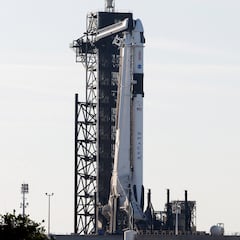Laser message sent from deep space reaches Earth: NASA: “next step in sending humans to Mars”
The technology means astronauts will be able to receive communications from Earth while being as far away as Mars.


NASA has achieved a groundbreaking milestone by successfully transmitting a laser-beamed message from nearly 10 million miles away within a remarkable 50 seconds.
This technological feat, made possible through NASA’s Deep Space Optical Communications (DSOC) experiment aboard the Psyche spacecraft, represents a significant leap in space communication capabilities.
Remember the tech demo that launched with #MissionToPsyche? Well, it just called home.
— NASA JPL (@NASAJPL) November 17, 2023
It's the first time data has been transmitted – via laser – beyond the Moon, and it could transform how spacecraft communicate.
More on DSOC: https://t.co/LydN2YaQIn pic.twitter.com/NUaSzB53kv
It marks the first instance of using lasers for data transmission from such a vast distance, making communication with Mars achievable within a reasonable time-frame.
“Achieving first light is a tremendous achievement. The ground systems successfully detected the deep space laser photons from DSOC’s flight transceiver aboard Psyche,” said Abi Biswas, project technologist for DSOC at NASA’s Jet Propulsion Laboratory.
“And we were also able to send some data, meaning we were able to exchange ‘bits of light’ from and to deep space.”.
How the technology works
The successful transmission, received by the Hale Telescope in San Diego County, California, involved a laser signal acting as a guiding beacon for the Psyche spacecraft, which then relayed information back using its own laser.
Related stories
DSOC’s optical communication technology, akin to fiber optic internet, enables the transmission of light signals at speeds comparable to radio waves but with significantly enhanced data-carrying capacity. This is crucial for contacting astronauts on Mars, one of NASA’s main future plans.
Talk about a long-distance relationship...@NASA’s DSOC experiment, which recently launched on #NASAPsyche, has beamed a near-infrared laser encoded with test data from nearly 10 million miles (16 million kilometers) away for the first time!https://t.co/HM2xDIkee4 pic.twitter.com/8lQsGqvrm2
— NASA Marshall (@NASA_Marshall) November 17, 2023
“The primary objective is to give future NASA missions the tools for returning data at much higher rates,” Biswas said in a video.

